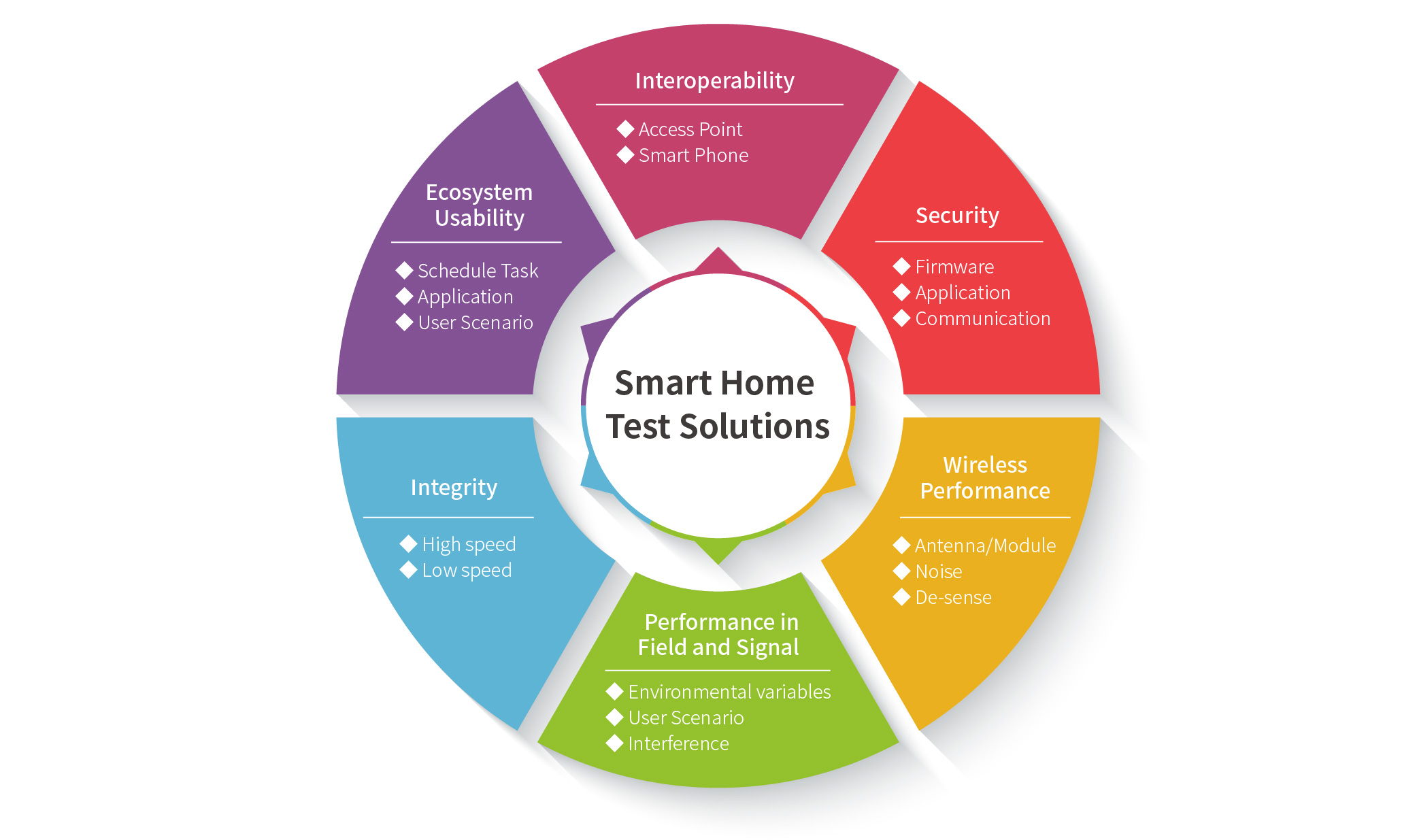Technically, Smart Entertainment Devices and Innovative Sound Systems continue to reshape how we unwind, participate, and discover new levels of delight through a mix of visually appealing graphics and sound. With the ever-evolving technology, these devices promise to blur the gap between reality and fantasy, enriching our lives with new forms of entertainment and participation.
As a result, traditional forms of entertainment have been eclipsed by innovative forms of entertainment technology, ushering in a new era of immersive experiences that captivate our senses and transport us to incredible worlds. Given their steadfast evolution, some may say these are technical miracles — catering to various interests, from visual spectacles to interactive sound amusement.
On the one hand, Smart Entertainment Devices have turned our living settings into dynamic, networked ecosystems that respond to our wants and preferences. On the other hand, driven by modern and innovative technology, these smart home gadgets improve convenience, security, and energy efficiency. They allow us to control numerous parts of our homes from a single location.
Notwithstanding, as the Internet of Things (IoT) expands, the potential for interconnected houses is boundless. There are some fantastic instances of how entertainment has altered how we unwind and enjoy our free time. Smart Entertainment Devices (visual and sound gadgets) epitomize the marriage of technology and domestic life, offering unrivaled ease, security, and efficiency.
Demystifying Smart Entertainment Devices And Sound Systems
OK, ask Google what Smart Entertainment Devices offers potential users. You might be surprised to see various answers about innovative home devices, technology, and gadget automation. Or maybe friends and neighbors have talked about how they’ve taken steps to make their houses “Smart.” From convenience to safety to fun, there are a lot of benefits to home device automation.
But you may not know how or where to begin. For instance, what should you do first, choose an intelligent hub, or pick your devices? Do you start with lighting or temperature controls? What’s the best smart home setup? As with any new technology, there can be some confusion about what’s behind the buzzword. Such as differentiating between home device compatibility and network technology.
Smart Entertainment Devices are hardware or electronic tools and equipment that allow persons or systems to transmit information, data, or signals over short or long distances. Examples of innovative gadgets are telephones, cellphones, laptops, radios, routers, modems, and other devices that enable various forms of communication, such as voice, data, or multimedia transmission.
In today’s culture, they play an essential function in linking people and facilitating the movement of information. Each device can be controlled from your phone or by the sound of your voice through a smart speaker. For instance, by conducting comprehensive test solutions, Allion guarantees your smart entertainment devices can be seamlessly connected, safe, and work all the time.
Smart Entertainment Devices Help Foster Immersive User Experiences
Of course, we can easily and quickly outsource various forms of Smart Entertainment Devices and sound systems from modern marketplaces. To enumerate, a smart home gadget is an internet-connected electronic item or appliance that may be controlled remotely or automated to conduct various domestic activities. These gadgets frequently use sensors, software, and wireless systems.
We can interact with Smart Entertainment Devices and other home gadgets through connectivity automation and innovative communication technologies. They simplify and improve our daily lives by giving better control, energy savings, convenience, and even enhanced security. This also boosts convenience, energy efficiency, and general functionality within a home environment.
The best Smart Entertainment Devices and home gadget setups include an entire network of intelligent devices. Eventually, they allow you to effortlessly monitor and control any aspect of your house, whether home or away. These clever devices – from doorbells to motion sensors to appliances – can be linked via Wi-Fi or a cellular frequency to your smartphone or a single wireless topology.
By all means, Smart Entertainment Devices are designed to bring exceptional delight while promising even more imaginative ways to enhance our living experiences. Today, there are some outstanding instances of how Smart Entertainment Devices (visual and sound technologies) have transformed how we interact with our living surroundings. Below are a few examples of smart home devices.
1. Appliances And Sensors
For example, smart refrigerators, ovens, and washing machines provide remote control, notifications, and energy monitoring, making home activities more efficient. Motion, temperature changes, and open/close events are detected by devices such as the Wyze Sense Kit and the Samsung SmartThings Multipurpose Sensor, prompting customizable actions.
2. Televisions And Speakers
Excellent visuals and internet connectivity come together in smart TVs, the centerpiece of contemporary entertainment. Ultra-high-definition displays, voice control, and streaming apps are all features in Samsung, LG, and Sony models that bring movies, TV shows, and games to life. Amazon Echo and Google Nest speakers, which include virtual assistants such as Alexa and Google Assistant, enable voice-controlled functions such as playing music, setting reminders, and controlling other smart devices.
3. Thermostats And Sound
Nest Thermostats and ecobee smart thermostats learn your temperature preferences and regulate heating and cooling based on your schedule, resulting in energy savings and personalized comfort. Portable projectors like the Anker Nebula and Epson Home Cinema turn any surface into a screen, allowing users to watch movies and presentations in various settings. Regarding home theater systems, these devices include high-quality speakers, subwoofers, and AV receivers to recreate the movie experience in the comfort of your own home. Karaoke machines, such as Singing Machine and Karaoke USA, provide hours of musical fun with friends/family.
4. Doorbells And Locks
Ring Video Doorbell and Nest Hello video doorbells provide real-time video streaming, allowing you to watch and chat with visitors remotely, improving security and convenience. At the same time, smart locks from August and Yale may be managed using mobile applications. You can use them to grant guests access, remotely lock and unlock doors, and keep track of entry records.
5. Streaming And Gaming
Roku, Amazon Fire TV Stick, and Google Chromecast turn ordinary televisions into smart streaming hubs. They give consumers access to numerous streaming services, allowing them to watch movies, TV series, and other information on the large screen. Sony PlayStation, Microsoft Xbox, and Nintendo Switch have matured into gaming powerhouses capable of delivering rich gaming experiences. They provide casual and dedicated gamers with realistic graphics, intricate storytelling, and online multiplayer features.
6. VR Headsets And AR Devices
On the one hand, Virtual Reality (VR) headsets such as the Oculus Rift, HTC Vive, and PlayStation VR immerse users in simulated settings, allowing for unprecedented interactive experiences. These devices are used for more than just gaming; they are also for educational simulations, virtual tourism, and artistic expression. On the other hand, Augmented reality (AR) devices, such as Microsoft HoloLens and mobile AR platforms, combine digital content with the actual environment. They provide various applications, including interactive storybooks for youngsters, improved navigation tools, and interior design simulations.
7. Portable Players And Readers
While smartphones are frequently used, dedicated portable media players such as the iPod Touch and Sony Walkman continue to appeal to music fans who want a separate device for their audio and video material. QR code and eBook readers, such as the Amazon Kindle, act as a portable library, allowing enthusiastic readers to carry an entire library in a single device. These devices have adjustable lighting and reduced eye strain for extended reading. Wireless Headphones and Earbuds: Wireless headphones, such as Bose QuietComfort and Sony WH-1000XM, offer immersive soundscapes and noise cancellation, enhancing the audio experience across various forms of entertainment.
8. Remote Drones And Cameras
Drones outfitted with cameras and stabilization technologies give photographers and videographers a unique perspective, allowing them to take spectacular aerial photos and videos. Arlo and Wyze, two examples of indoor and outdoor smart cameras, offer surveillance features, including real-time video streaming, motion detection, and even cloud storage for data.
9. Smart Lights And Plugs
You can adjust lighting intensity and color using smartphone applications, or voice commands with intelligent bulbs and light strips from Philips Hue and LIFX, creating a custom environment for any event. Regular appliances can now be managed and scheduled remotely via smartphone apps thanks to devices like the TP-Link Kasa Smart Plug and the Wemo Mini Smart Plug. There are also smart-powered blinds and shades in this category. For example, Somfy and Lutron’s automated window coverings can be operated by applications or voice commands, providing ease, privacy, and energy efficiency.
10. Sprinklers And Gas Detectors
Watering schedules are adjusted by systems such as Rachio and RainMachine based on weather forecasts, which helps conserve water while maintaining healthy landscapes. Nest Protect and First Alert are two examples of smart home gadgets. Onelink detects smoke and carbon monoxide and sends you information through smartphones and loud alarms. Equally important are remote feeding and scheduling devices for pets, such as the PetSafe Smart Feed and Petnet SmartFeeder. These devices ensure your pets are catered for even when you are absent.
The Best Practices When Choosing Your Smart Entertainment Devices
A connected home environment adds convenience and efficiency to your life by helping to automate minor tasks and chores. In other words, it will help you put some of your daily routine on autopilot for more time to do what you love. Be that as it may, there are a few practices to consider when investing in smart devices. For instance, ensure it’s compatible with your smart hub before buying it.
Unlike traditional test solutions, which used to focus only on the product’s functionality, smart home gadget sellers should provide total validation in terms of the whole ecosystem. This includes interoperability between APs or devices, product functionality, application compatibility, scenario-based validation, interference tests, and other comprehensive system device test solutions.
Typical installation setups for Smart Entertainment Devices or home gadgets include lighting, thermostats, and speakers, all connected by a dedicated smart hub or a smart speaker. But again, it’s really up to you. Your smart home should include components that you will use and enjoy. Regarding selection, one fact is that these devices rely on data to function and improve their services.
They can collect data from your voice commands, interactions, location, habits, preferences, and network activity. Some of this data is stored locally on the device, while some is transmitted to the cloud or third-party servers. Depending on the device and the provider, you may have some control over what data is collected and how it is used, but not always. Below are other vital suggestions.
1. Research And Reviews
As a rule of thumb, before you buy or install any smart home device, it is essential to do some research and compare different options. Ask yourself what the features and benefits of the device are and if they match your needs and expectations. Look into the reviews and ratings of the device and the provider to ensure they have a good reputation and track record. Equally important, consider the device’s costs and maintenance to ensure it fits your budget and lifestyle. By asking these questions, you can make informed and responsible decisions about your smart entertainment devices and how they affect your data privacy and security.
2. Budget And Specifications
The second thing to consider is how much you will spend on your home entertainment system. Of course, the more features and quality you want, the more expensive it will be. However, you don’t have to break the bank to get a decent home entertainment system. You can look for deals, discounts, bundles, or refurbished products that offer good value for money. You can also prioritize the devices and software that matter most to you and compromise on the ones that don’t. For example, you may splurge on a high-end TV but settle for a cheaper soundbar, or vice versa.
3. Portability And Installation
The next thing to consider is how much space you have and how you want to arrange your devices. For example, do you have a dedicated room for your home theater, or do you need to fit everything in your living room? Do you prefer a wall-mounted TV or a projector? How many speakers can you accommodate, and where will you place them? How will you connect your devices to the power source? These questions will help you narrow down your choices and plan your layout.
4. Preference And Marketplace
Most of the decision comes down to which smart home gadgets selling platform you prefer – you’ll want to buy devices compatible with your voice assistant to create routines or control your gadgets hands-free. For example, you can consider Amazon Alexa, Google Assistant or Home, and Apple HomeKit or Siri. Look for Smart Entertainment Devices market sellers who can help improve convenience, security, and energy efficiency while allowing you to control numerous parts of your home from a single location.
5. Content And Sources
The next thing to consider is what kind of content and sources you want to enjoy on your home entertainment system. For example, do you watch mostly streaming services, cable TV, DVDs, or Blu-rays? Do you play video games, listen to music, or browse the web? Do you have a subscription to a specific platform or service, such as Netflix, Spotify, or Apple TV? Depending on your answers, you may need different devices and software to access and optimize your content. For example, you may need a smart TV, a streaming device, a gaming console, a soundbar, or a media server.
6. Quality And Performance
Next, consider the quality and performance you expect from the home entertainment system. For example, do you care about your display’s resolution, contrast, color, and brightness? Do you want surround sound, Dolby Atmos, or other audio enhancements? Do you need fast processing, low latency, and a high frame rate for your gaming? Depending on your answers, you may need to look for certain specifications and features in your devices and software. For example, you may need a 4K, HDR, or OLED TV, a sound system with subwoofer and satellite speakers, or a gaming PC with a powerful graphics card.
7. Compatibility And Convenience
In this case, consider the compatibility and convenience of the home entertainment system. The devices and software should work well with your existing network and equipment. You also want them to be easy to use, control, and update. For example, you may want to look for devices and software that support HDMI, Wi-Fi, Bluetooth, or other common standards and protocols. You may also want to look for devices and software with remote controls, voice assistants, or apps that let you manage them from your smartphone or tablet.
8. Personalization And Preference
It would help to consider how personalized and preferred your home entertainment system is. You want your devices and software to match your style, taste, and mood. You also want them to offer you options, features, and settings that let you customize your experience. For example, you may want to look for devices and software that have different modes, themes, profiles, or presets that suit various occasions, genres, or users. You may also want to look for devices and software with intelligent features, recommendations, or integrations that enhance your enjoyment.
9. Security And Safety
Of course, Smart Home Gadgets have turned our living settings into dynamic, networked ecosystems that respond to our wants and preferences. Unfortunately, in some cases, user manuals don’t address privacy concerns or give you enough information to be sure the device is secure. As a result, some devices can easily be hacked by malicious actors who want to access your data, spy on you, and cause damage. Hackers can exploit device software, firmware, or hardware vulnerabilities or use phishing, malware, or brute force attacks to access your network or accounts. For instance, baby monitors and security cameras have been hacked, allowing criminals to see inside a house.
10. Privacy And Compliance
As mentioned above, smart devices can be a great addition to your home, but you must also understand the data privacy risks and compliance concerns that come with them. They can compromise your privacy in many ways, including targeted attacks, location tracking, real-time recording, etc. The truth is that IoT’s ceaseless data collection and transmission create a digital footprint that is frequently beyond our control. This unchecked invasion of personal privacy jeopardizes how consumers view emerging technologies once developed to solve a problem. To meet CCPA & GDPR Compliance Consent requirements, consider product sellers who understand that they must not sell, distribute, or lease your personal information to third parties.
How To Optimize System Security On Your Home Entertainment Gadgets
Most smart entertainment devices can share your data with other devices, apps, or services, either within your network or outside of it. For example, you may link your smart speaker to your music streaming service, your smart thermostat to your weather application, or your smart camera to your cloud storage. Although this enhances your user experience, it exposes your data to more risks.
This includes data access by third parties and cybercriminals, leading to potential security breaches. Remember, various smart home device manufacturers collect data differently. For example, Amazon and Google devices constantly send recorded speech back to their parent companies. In contrast, Apple devices only start recording speech after they hear the trigger phrase ‘Hey Siri!’
You should take some essential steps to secure your smart home devices and protect your privacy and security. On that note, you should always check the privacy policies and permissions of any service or application you connect to your smart home devices. You can also ensure you use a unique and strong password for your devices, accounts, and network and change them regularly.
Related Tool: Yeti Smart Home App | Control All Your Devices In One Place!
Read reviews focusing on security aspects and look for known vulnerabilities or breaches associated with the device. Ensure compatibility with your secure home network and avoid devices requiring unnecessary permissions or access. Regularly update device firmware, consider the necessity of internet connectivity for each device, and isolate IoT devices on a separate network.
Enable additional security features, such as Two-Factor Authentication (2FA) for your accounts, if available, to add an extra layer of security. Regularly update your devices, apps, and routers for the latest security patches and fixes. Disable or limit features you don’t need or use, such as microphone, camera, or location. Review and adjust Smart Entertainment Devices’ privacy settings.
Optimize your applications and services access for the most control and transparency over your data. Use a VPN to encrypt your network traffic and hide your IP address. At the same time, use a firewall or antivirus software to protect your devices and network from malware or unauthorized access, and scan your devices and network regularly for any signs of infection or intrusion.
In Conclusion;
It’s worth mentioning that Communication Gadgets and Smart Entertainment Devices have played a vital part in altering how we connect and interact in the ever-changing realm of technology. From the humble beginnings of the telephone to the era of smartphones and beyond, these devices have not only altered our forms of communication but also significantly impacted society.
There’s an intriguing history of communication devices and their tremendous impact on our lives. Not only have smart home gadgets brought people closer together, but they have also changed the way businesses and individuals interact. These devices continue to grow as technology advances, providing even more seamless and immersive communication experiences in the future.
By taking advantage of improvements in networking technologies and innovations in both connected smart entertainment devices and voice recognition, it’s now possible to bring many aspects of your home online – lighting, heating, entryways, entertainment systems, and more. Lights that once had to be flipped on and off at the switch can now be commanded by the sound of your voice.
And thermostats that had to be adjusted by hand can now be controlled remotely from your smartphone. Automation like this – spread throughout an entire house – makes a home smart. Put another way, it’s the Internet of Things in the home. Fortunately, this article has explored the best selection practices and tips for incorporating Smart Entertainment Devices into daily lifestyle.
Other Related Resource References:
- Mobile Security | Your Device & Data Threats Protection Tips
- Pioneering Research In IoT Device Privacy And Security | NSF
- How Wearable Technology (Wearables) Simplify Our Modern Life
- Ways Smart Devices Are Empowering Cinematic Theater Experiences
- Why Multi-Factor Authentication (MFA) Matters In Business Security
That’s it! The topmost Smart Entertainment Devices to consider and best selection practices. In summary, consider the security risks of the device and how it collects, stores, shares, and protects your data. Research the device provider’s privacy policies, customer practices, and any third-party service or application you connect to the device. Ensure they respect your rights and preferences.





